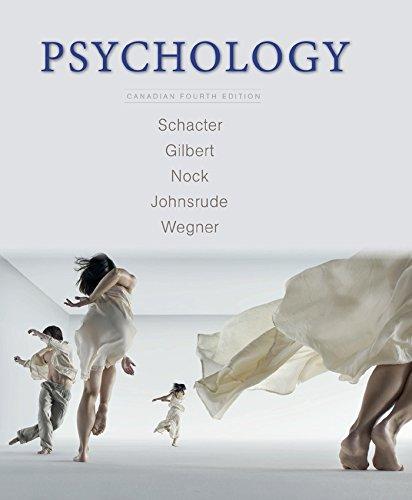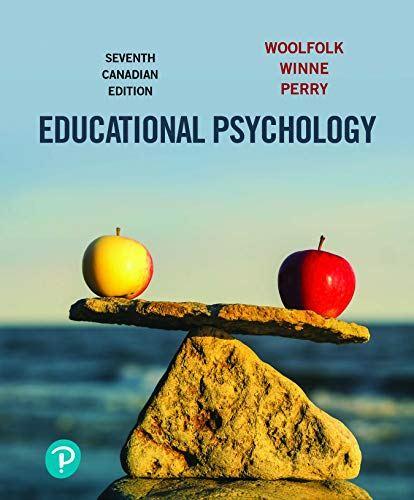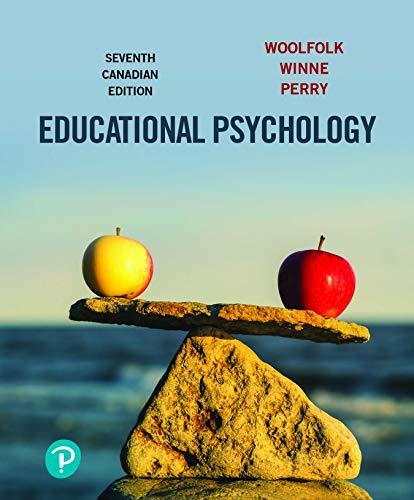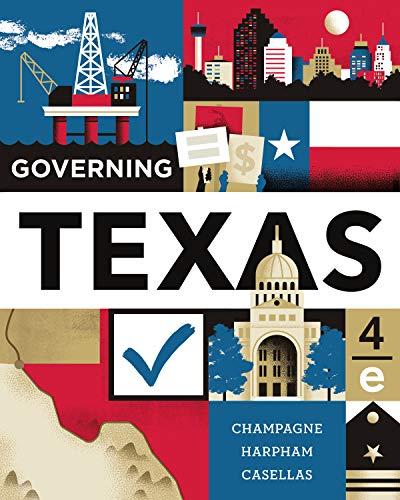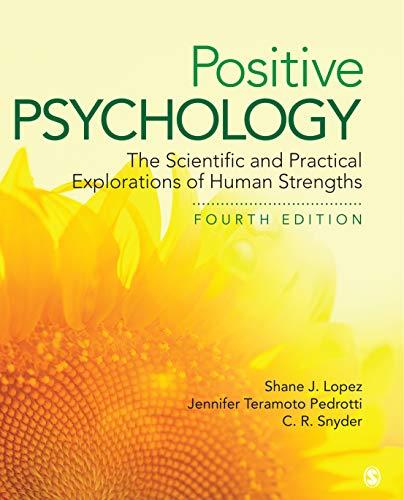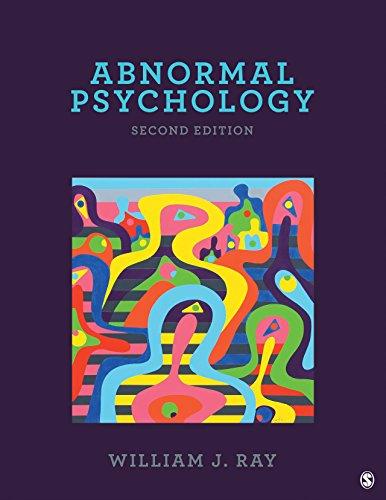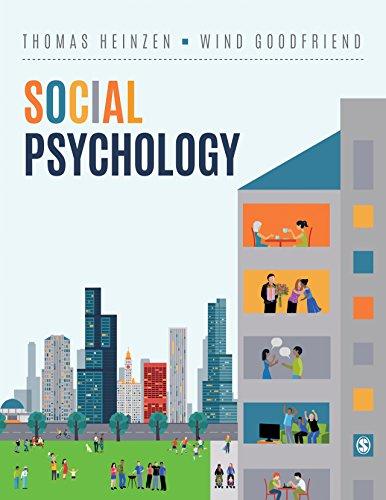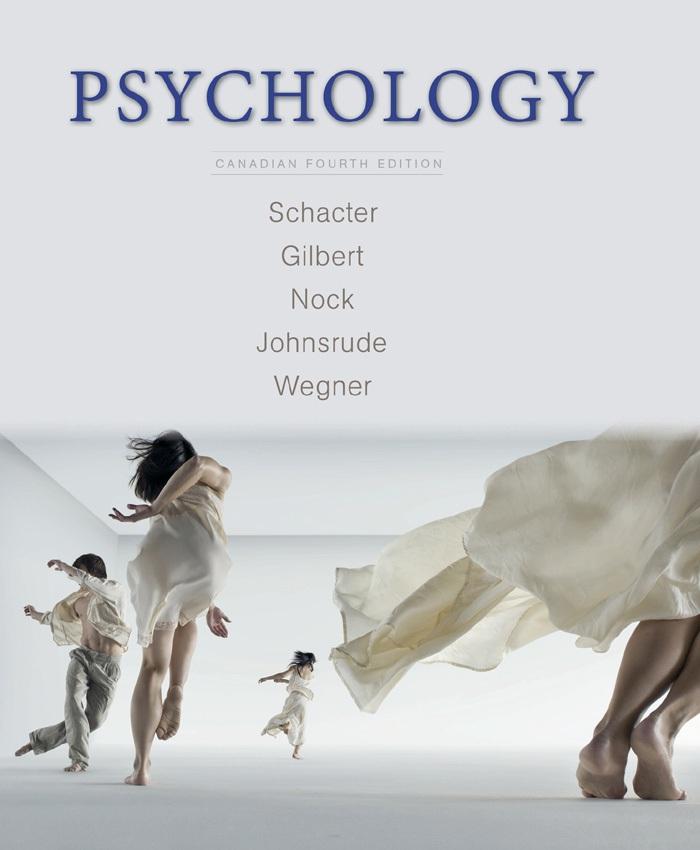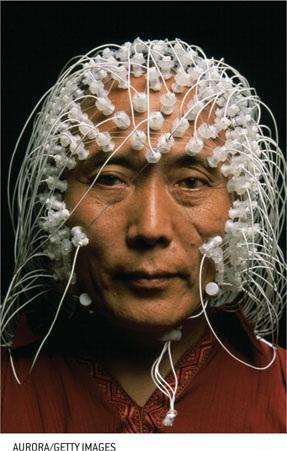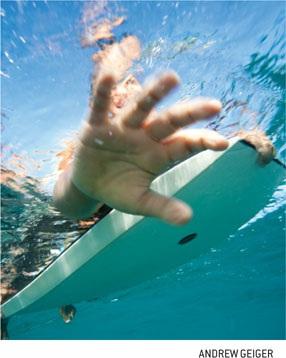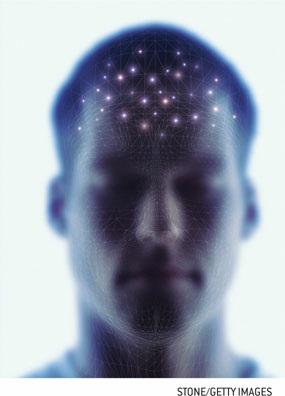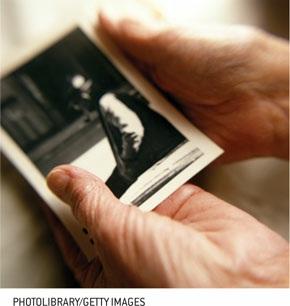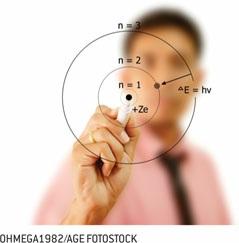About the Authors
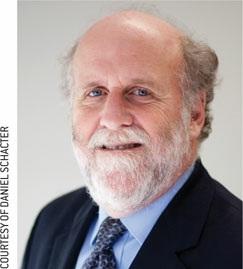
Daniel Schacter is William R. Kenan, Jr. Professor of Psychology at Harvard University. Dan received his BA degree from the University of North Carolina at Chapel Hill. He subsequently developed a keen interest in amnesic disorders associated with various kinds of brain damage. He continued his research and education at the University of Toronto, where he received his PhD in 1981. He taught on the faculty at Toronto for the next six years before joining the psychology department at the University of Arizona in 1987. In 1991, he joined the faculty at Harvard University. His research explores the relationship between conscious and unconscious forms of memory, the nature of distortions and errors in remembering, and the ways in which we use memory to imagine future events. Many of his studies are summarized in his 1996 book, Searching for Memory: The Brain, the Mind, and the Past, and his 2001 book, The Seven Sins of Memory: How the Mind Forgets and Remembers, both winners of the American Psychological Association’s William James Book Award. He has also received a number of awards for teaching and research, including
the Harvard-Radcliffe Phi Beta Kappa Teaching Prize, the Award for Distinguished Scientific Contributions from the American Psychological Association, and the William James Fellow Award from the Association for Psychological Science. In 2013, he was elected to the National Academy of Sciences.
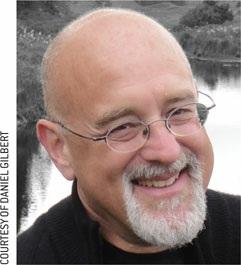
Daniel Gilbert is the Edgar Pierce Professor of Psychology at Harvard University. Dan received his BA from the University of Colorado at Denver and his PhD from Princeton University. From 1985 to 1996, he taught at the University of Texas at Austin, and in 1996, he joined the faculty of Harvard University. He has received the American Psychological Association’s Distinguished Scientific Award for an Early Career Contribution to Psychology and the Diener Award for Outstanding Contributions to Social Psychology, and has won teaching awards that include the Phi Beta Kappa Teaching Prize and the Harvard College Professorship. His research focuses on how and how well people think about their emotional reactions to future events. He is the author of the international best seller Stumbling on Happiness, which won the Royal Society’s General Prize for best popular science book of the year, he is the co-writer and host of the PBS television series This Emotional Life, and yes, he’s that guy in the Prudential commercials.
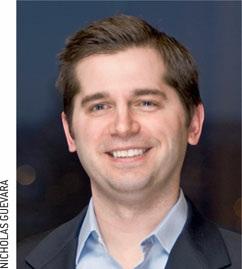
Matthew Nock is a Professor of Psychology at Harvard University. Matt received his BA from Boston University (1995) and his PhD from Yale University (2003), and he completed his clinical internship at Bellevue Hospital and the New York University Child Study Center (2003). He joined the faculty of Harvard University in 2003 and has been there ever since. While an undergraduate, he became very interested in the question of why people do things to intentionally harm themselves, and he has been conducting research aimed at answering this question since that time. His research is multidisciplinary in nature and involves a range of methodological approaches (e.g., epidemiologic surveys, laboratory-based experiments, and clinic-based studies) to understand better how these behaviours develop, how to predict them, and how to prevent their occurrence. He has received multiple teaching awards at Harvard and four early career awards recognizing his research, and in 2011 was named a MacArthur Fellow.
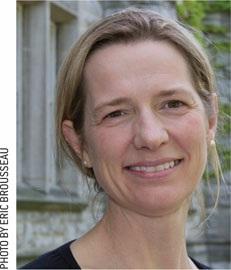
Ingrid Johnsrude is Professor and Western Research Chair in Cognitive Neuroscience at the University of Western Ontario. Ingrid received her BS from Queen’s University (1989), and her PhD from McGill University (1997), where she was supervised by the pioneering neuropsychologist Brenda Milner. After earning her doctorate, she spent time in the United Kingdom as a postdoctoral fellow at University College London and then as an Investigator Scientist in Cambridge, before returning to Queen’s in 2004, and then moving to Western in 2014. During her time in England, she contributed to a paper showing that taxi drivers in London with extensive navigation experience have larger hippocampi than the general population, revealing one of the ways that experience can alter the structure of the human brain. This finding, notable for both the content of the study and the pioneering methods used, is a common example in introductory psychology texts. Ingrid’s principal area of investigation is the neural basis of understanding speech and language. Her investigations span multiple levels from understanding the brain structures involved in hearing and speech comprehension to observing the ways listeners deal with challenges such as background noise.
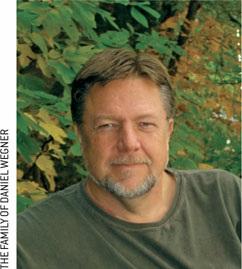
Daniel Wegner was the John Lindsley Professor of Psychology in Memory of William James at Harvard University. He received his BS in 1970 and his PhD in 1974, both from Michigan State University. He began his teaching career at Trinity University in San Antonio, Texas, before receiving his appointments at the University of Virginia in 1990 and then at Harvard University in 2000. He was a Fellow of the American Academy of Arts and Sciences and also the recipient of the William James Award from the Association for Psychological Science, the Award for Distinguished Scientific Contributions from the American Psychological Association, and the Distinguished Scientist Award from the Society of Experimental Social Psychology. His research focused on thought suppression and mental control, transactive memory in relationships and groups, and the experience of conscious will. His work on thought suppression and consciousness served as the basis of two popular books, White Bears and Other Unwanted Thoughts and the Illusion of Conscious Will, both of which were named Choice Outstanding Academic Books. He died in 2013.
SUBJECT INDEX
CONTENTS
Preface
1 Psychology: Evolution of a Science
Psychology’s Roots: The Path to a Science of Mind
Psychology’s Ancestors: The Great Philosophers
Linking the Mind to the Brain: The French Connection
Structuralism: A First Step Toward the Scientific Method
Functionalism: Mental Processes as Adaptations
THE REAL WORLD: Improving Study Skills
The Development of Clinical Psychology
Lessons from Work with Patients
Freud Develops Psychoanalytic Theory
The Rise of Humanistic Psychology
The Search for Objective Measurement: Behaviourism Takes Centre Stage
Watson and the Emergence of Behaviourism
OTHER VOICES: Is Psychology a Science?
B. F. Skinner and the Development of Behaviourism
Return of the Mind: Psychology Expands
Pioneering Ideas Lead to Cognitive Psychology
The Brain Meets the Mind: The Rise of Cognitive Neuroscience
The Adaptive Mind: The Emergence of Evolutionary Psychology
Beyond the Individual: Social and Cultural Perspectives
The Development of Social Psychology
The Emergence of Cultural Psychology
A WORLD OF DIFFERENCE: To Have and Have Not
The Profession of Psychology: Past and Present
Psychologists Band Together: The American Psychological Association
What Psychologists Do: Research Careers
HOT SCIENCE: Psychology as a Hub Science
Chapter Review
Key Concept Quiz
Key Terms
Changing Minds
2 Methods in Psychology
Empiricism: How to Know Stuff
The Scientific Method
The Art of Looking
Observation: What Do People Do?
Measurement
A WORLD OF DIFFERENCE: Are Heroes and Sheroes Divided by Zeroes?
Description
Explanation: Why Do People Do What They Do?
Correlation
Causation
HOT SCIENCE: Is Science Gender Biased?
THE REAL WORLD: Oddsly Enough
Drawing Conclusions: What Do Measurements Tell Us?
Thinking Critically About Evidence
We See What We Expect and Want
The Skeptical Stance
The Ethics of Science: What’s Right?
Respecting People
OTHER VOICES: Can We Afford Science?
Respecting Animals
Respecting Truth
Chapter Review
Key Concept Quiz
Key Terms
Changing Minds
3 Neuroscience and Behaviour
Neurons: The Origin of Behaviour
Components of the Neuron
Neurons Specialized by Function
Neurons Specialized by Location
The Electrochemical Actions of Neurons: Information
Processing
Electric Signaling: Conducting Information Within a Neuron
Chemical Signaling: Transmission Between Neurons
The Organization of the Nervous System
Divisions of the Nervous System
Components of the Central Nervous System
HOT SCIENCE: The Power of Thought: Brain–Machine Interfaces
Structure of the Brain
The Hindbrain
The Midbrain
The Forebrain
Brain Plasticity
THE REAL WORLD: Brain Plasticity and Sensations in Phantom Limbs
The Development and Evolution of Nervous Systems
Prenatal Development of the Central Nervous System
Evolutionary Development of the Central Nervous System
Genes, Epigenetics, and the Environment
HOT SCIENCE: Epigenetics and the Persisting Effects of Early Experiences
Investigating the Brain
Studying the Damaged Brain
Studying the Brain’s Electrical Activity
Using Brain Imaging to Study Structure and to Watch the Brain in Action
OTHER VOICES: Neuromyths
Chapter Review
Key Concept Quiz
Key Terms
Changing Minds
4
Sensation and Perception
Sensation and Perception Are Distinct Activities
Psychophysics
Measuring Thresholds
Signal Detection
THE REAL WORLD: Multitasking
Sensory Adaptation
Vision I: The Eyes and the Brain Convert Light Waves to Neural Signals
Sensing Light
Perceiving Colour
The Visual Brain
A WORLD OF DIFFERENCE: The Dress
Vision II: Recognizing What We Perceive
Attention: The “Glue” That Binds Individual Features Into a Whole
Recognizing Objects by Sight
Perceiving Depth and Size
Perceiving Motion and Change
OTHER VOICES: Hallucinations and the Visual System
Audition: More Than Meets the Ear
Sensing Sound
Perceiving Pitch
Hearing Loss
HOT SCIENCE: Music Training: Worth the Time
The Body Senses: More Than Skin Deep
Sensing Touch
Sensing Pain
Perceiving Pain
Body Position, Movement, and Balance
The Chemical Senses: Adding Flavour
Sense of Smell
Perceiving Smell
Sense of Taste
Perceiving Taste
Chapter Review
Key Concept Quiz
Key Terms
Changing Minds
5 Consciousness
The Mysteries of Consciousness
The Problem of Other Minds
The Mind–Body Problem
The Nature of Consciousness
Four Basic Properties
Levels of Consciousness
Conscious Contents
HOT SCIENCE: Coma and Disorders of Consciousness
The Unconscious Mind
Freudian Unconscious
THE REAL WORLD: Anyone for Tennis?
A Modern View of the Cognitive Unconscious
The Unconscious Mind: Smart or Not So Smart?
Sleep and Dreaming: Good Night, Mind
Sleep Dreams
A WORLD OF DIFFERENCE: Dreaming Blind
Drugs and Consciousness: Artificial Inspiration
Drug Use and Abuse
Types of Psychoactive Drugs
OTHER VOICES: Pot Should Be Legalized, Regulated, and Sold Like Alcohol: Addiction Centre
Hypnosis: Open to Suggestion
Induction and Susceptibility
Hypnotic Effects
Chapter Review
Key Concept Quiz
Key Terms
Changing Minds
6 Memory
What Is Memory?
Encoding: Transforming Perceptions Into Memories
Semantic Encoding
Visual Imagery Encoding
Organizational Encoding
Encoding of Survival-Related Information
Storage: Maintaining Memories Over Time
Sensory Storage
Short-Term Storage and Working Memory
Long-Term Storage
HOT SCIENCE: Sleep on It
Memories, Neurons, and Synapses
Retrieval: Bringing Memories to Mind
Retrieval Cues: Reinstating the Past
Consequences of Retrieval
Separating the Components of Retrieval
A WORLD OF DIFFERENCE: Childhood Amnesia in Western and Eastern Cultures
Forms of Long-Term Memory: More Than One Kind
Implicit Memory
Explicit Memory: Semantic and Episodic
Collaborative Memory: Social Influences on Remembering
THE REAL WORLD: Is Google Hurting Our Memories?
Memory Failures: The Seven “Sins” of Memory
1. Transience
2. Absentmindedness
3. Blocking
4. Memory Misattribution
OTHER VOICES: Memories Inside Out
5. Suggestibility
6. Bias
7. Persistence
Are the Seven “Sins” Vices or Virtues?
Chapter Review
Key Concept Quiz
Key Terms
Changing Minds
7 Learning
What Is Learning?
Classical Conditioning: One Thing Leads to Another
The Basic Principles of Classical Conditioning
THE REAL WORLD: Understanding Drug Overdoses
Conditioned Emotional Responses: The Case of Little Albert
A Deeper Understanding of Classical Conditioning
Operant Conditioning: Reinforcements from the Environment
The Development of Operant Conditioning: The Law of Effect
B. F. Skinner: The Role of Reinforcement and Punishment
The Basic Principles of Operant Conditioning
A Deeper Understanding of Operant Conditioning
HOT SCIENCE: Dopamine and Reward Learning in Parkinson’s Disease
Observational Learning: Look at Me
Observational Learning in Humans
Observational Learning in Animals
Neural Elements of Observational Learning
Implicit Learning: Under the Radar
Cognitive Approaches to Implicit Learning
A WORLD OF DIFFERENCE: Implicit Learning in Autism Spectrum Disorder
Implicit and Explicit Learning Use Distinct Neural Pathways
Learning in the Classroom
Techniques for Learning
OTHER VOICES: Learning at Jiffy Lube University
Testing Aids Attention
Control of Learning
Chapter Review
Key Concept Quiz
Key Terms
Changing Minds
8
Emotion and Motivation
Emotional Experience: The Feeling Machine
What Is Emotion?
The Emotional Body
The Emotional Brain
The Regulation of Emotion
Emotional Communication: Msgs w/o Wrds
Communicative Expression
Deceptive Expression
A WORLD OF DIFFERENCE: Say Cheese
OTHER VOICES: I Used to Get Invited to Poker Games . . .
Motivation: Being Moved
The Function of Emotion
Instincts and Drives
Wanting: The Body’s Desires
Hunger
Eating Disorders
THE REAL WORLD: A Feast for the Eyes
HOT SCIENCE: The Nutritionist Behind Your Eyes
Sexual Desire
Sexual Activity
Wanting: The Mind’s Desires
Intrinsic versus Extrinsic
Conscious versus Unconscious
Approach versus Avoidance
Chapter Review
Key Concept Quiz
Key Terms
Changing Minds
9
Language and Thought
Language and Communication: From Rules to Meaning
The Complex Structure of Human Language
Language Development
A WORLD OF DIFFERENCE: Exploring the 30Million-Word Gap
Theories of Language Development
Language Development and the Brain
Broca’s Area and Wernicke’s Area of the Brain
Involvement of the Right Cerebral Hemisphere
Bilingualism and the Brain
Can Other Species Learn Human Language?
OTHER VOICES: Just Say ‘Non’: The Problem with French Immersion
Language and Thought: How Are They Related?
Language and Colour Processing: Differing Results
Language and the Concept of Time: Results Imply a Link
Was Whorf “Half Right”?
Concepts and Categories: How We Think
Psychological Theories of Concepts and Categories
Concepts, Categories, and the Brain
Decision Making: Rational and Otherwise
The Rational Ideal
The Irrational Reality
Why Do We Make Decision-Making Errors?
Decision Making and the Brain
Problem Solving: Working It Out
Means–Ends Analysis
Analogical Problem Solving
Creativity and Insight
HOT SCIENCE: Creative Problem Solving: Insiders and Outsiders
Transforming Information: How We Reach Conclusions
THE REAL WORLD: From Zippers to Political Extremism: An Illusion of Understanding
Chapter Review
Key Concept Quiz
Key Terms
Changing Minds
